Case Report 
 Creative Commons, CC-BY
Creative Commons, CC-BY
The Influence of Stress of a 5-Month Durance on Selected Blood Features of the Inmate in His Sixth Life Decade: A Case Study
*Corresponding author: Mirosław Mrozkowiak, Physiotherapy Practice AKTON, Poznań, Poland.
Received: August 07, 2023; Published: August 17, 2023
DOI: 10.34297/AJBSR.2023.19.002643
Abstract
Introduction: Physical activity is particularly important in the context of mental and physical balance of inmates, ones who socialized should come back into the society.
Aim of Research: It is to show the impact of environment stressors of the penitentiary on selected blood features of the inmate and his health state.
Material and Tools: The research was conducted on the inmate in his sixth life decade, imprisoned for 5months. There were 35 blood features analysed from blood tests: just before the first day of imprisonment, directly after penalty culmination and next three months after release.
Obtained Results: There were 175 results obtained from blood analysis from every five months blood specimen collection. Overall analysis of measurement showed right values in case of 77,14% of blood features. One should pay attention to values changes in PDW, MPV, Monocytes and Lactates. While the durance the measurement values were above the limit of the referential range. They were returning to the initial state within next months.
Summary: Reliable and permanent practice in keeping healthy lifestyle resulted in limited effects in the blood image of five-month stress while the durance. The stress value was leveled by visualization and affirmation (improvement of own efficiency by imagining a better future), by learning to keep the distance from throng (exercising the ability to notice benefits in difficult situations and obstacles), and by breathing relaxation and movement therapy.
Keywords: Blood features, Epigenetics, Stress, Healthy lifestyle
Introduction
The review of the literature on the subject shows that the influence of penitentiary measures used while the durance of inmates on the level of rehabilitation, the way of spending free time, the level of aggression, internal control, the level of anticipation of the consequences of one’s actions and social attitude were mostly explored [1-5]. This is a justified direction because this is the main purpose of the inmate’s durance. In the available literature, the author did not find any papers corresponding to the purpose of the research presented below.
Physical activity is particularly important in the context of mental and physical balance of inmates, who socialized should come back to the society. The advantages of the reintegration with the society through physical activity are universal because they influence the social, biological, and mental sphere. The chronic problem among inmates is the permanent lack of meeting the biological needs, those basic and higher ones [6]. It requires education to consciously limit the stressors, self-reduce the aggressive reactions, and minimize the tendency to violence. One of the methods to improve self-control is the physical culture recognized in the broad sense as a cultural-technical means influencing the inmates. Poklek [7] raises the universality of physical activity because in contrast to other various methods for prison reactions it is totally accepted by inmates independently on their level of demoralization or subculture. The inmates are often characterized by lack of work habit, unwillingness to study as well as no needs to make use of the culture, however, they mostly engage in regular physical activity. Free people are rather motivated to exercise regularly by getting fit not by improving their health condition. Jaworska [8] proves that inmates are motivated by developing reasons, mainly by improving physical fitness and less the health state.
The prisoner’s environment includes the impact of epigenetic factors in the broad sense. The resulting changes will affect epigenetic and genetic structure as well as gene expression. The genetic equipment of each person is different and not only determines the encoding process of the proteins of substrates obtained from food but also how the system will react to environmental stressors. Whereby, substrates obtained from food also affect gene expression. The epigenetic factor is recognised here as a chemical compound formed by the environment, in which the cell lives. There must be precisely read a defined DNA fragment so it could function well. It is epigenetic factor that determines, which genes will be activated, and which will remain inactive. It is the epigenome that enables the organism to adapt relatively quickly to changes in its environment. It is inherited and depends on permanent changes influenced by closer, more distant and surrounding environmental factors. Its chemical composition will be different in health and disease, in socially acceptable and unacceptable attitudes. These two complementary mechanisms of evolution, based on the genome (operating within the framework of phylogeny) and the epigenome (operating in the area of ontogenesis), enable the permanent adaptation of a man to living conditions, also to the direct environment of the inmate. We can effectively influence the quality of our own existence by changing our lifestyle. This knowledge allows to shift the burden of responsibility for the physical state of an individual from the genome to the epigenome, as it is modified because of our conscious actions. A chemical epigenetic factor can turn individual genes on and off, through methyl groups, the histone code and RNA, thereby changing their effect on the body. Methyl groups are molecules that bind with the DNA strand and thus block an access to the information of a specific fragment. The histone code is cylindrical proteins with a DNA strand wounded around it. They can hide or expose some sections of the genome by changing their spatial system. RNA is a ribonucleic acid; its short sections intercept and destroy information that has already been read from DNA to prevent the formation of an unwanted protein [9]. The intensity of these factors depends primarily on the lifestyle. A healthy lifestyle is recognised here as a set of 10 principles, in accordance with Cendrowski’s concept [10]. This concept corresponds well with the adjustments of Wolański [11], who divides them into regulative adjustments (short-term reactions with quickly reversible effects), assimilative adjustments (long-term relative reversible changes) and developmental adjustments (permanent phenotypic irreversible changes, but nonhereditary by the next generation). The problem is based on how the stressor affects the psychophysical state of the inmate not on the environmental factor determining the behavior of the individual. The adjudged long-term durance should undoubtedly be considered as the initial stage of chronic stress. Many changes start to appear in the body in situations of increased tension faced by the prisoner. According to Heszen Celińska, et al., [12] there are physiological reactions including: decreased immunity, acute senses and hypersensitivity to stimuli, increased secretion of adrenaline and norepinephrine, dry mouth, thermoregulation disorders, skin changes (rash, redness or pallor, acne); emotional reactions including: constant feeling of fear and anxiety, frustration, irritability, impatience, hopelessness, low self-esteem, emotional instability, depressed mood, pessimism, tearfulness, fatigue, nervousness, irrational aggression, annoyance, anger, impulsiveness, explosiveness, tic disorders, nervous movements and laughter, excessive expression, gnashing of teeth, avoiding contact with people or provoking conflicts and arguments; intellectual reactions include: disorders of concentration, memory, coordination, decision- making, cognitive processes (perception, attention), a sense of powerlessness, train of thought, blocking of thought, memory gaps, dimness of consciousness, irrationality of thinking, reduced efficiency and pace of work, slow-paced reflex, limited perception of the world and its complexity, impaired evaluation (assessment of the situation), decreased tolerance towards other people, impaired self-control, narrow consciousness - strongly focusing on one element of the environment or on one’s own situation, combined with total ignorance of everything that is not directly related to it.
Vicennati [13] draws attention to the somatization of chronic stress, which results in ailments in the physiological sphere of the body. So-called psychosomatic diseases are a group of sicknesses associated with changes within organs, in which mental factors play an important role in their etiology. In most cases, these are chronic diseases that worsen periodically. The most dangerous of them include increase in blood pressure, vasodilation in the brain, vasoconstriction in peripheral parts of the body and dilatation of the upper airways. It means that the immune, nervous, and circulatory systems are kept in full activity for a longer period. That can lead to many illnesses of the heart and digestive system, dermatological problems such as rashes or alopecia, severe migraine headaches, as well as reduced immunity, increased susceptibility to infections and depression.
The aim of the study was to demonstrate the impact of stressors in the penitentiary environment on selected features of the prisoner’s blood, and thus determining the state of physical health.
Methodology and Subject of Research
The study was conducted on a 68-year-old man with the weight of 89.9kg and height of 172cm. The BMI was 30.4, total fat 24.4 and internal fat 14, and muscle percentage 34.1. The measurements were scaled by Obron BF511. The first blood analysis showed that the values of the features were within referential ranges. The medical diagnosis thus made it possible to perform physical efforts up to the 3rd intensity range. The subject followed the rules of the healthy lifestyle decalogue, especially in terms of physical activity [10]. The research was carried out in accordance with the principles contained in the Declaration of Helsinki. The measurements were carried out in the Public Health Clinic, thus ensuring appropriate sanitary and hygienic conditions for the collection of research material. Blood specimen collections, due to its properties, were taken in the analytical laboratory, so that they would be immediately sent for analysis. Five consecutive blood specimen collections were carried out on an empty stomach around 7.15am, in the same social conditions, by the same nurse and in the same laboratory, in order to minimize the influence of external factors on the image of the examined blood features. The first blood specimen collection took place on 1st, July 2022, then on 7th December 2022, on 6th January 2023, on 15th February 2023 and on 9th March, 2023, always from the ulnar artery of the left upper limb, with completely relaxed muscles of the hand and forearm. The following blood characteristics were analyzed like: Na (sodium), K (potassium), Ca (calcium), Fe (iron), Mg (magnesium), urea, lactate, insulin, cortisol, NEU (neutrophils), NEU% (neutrophil percentage), LYM (lymphocytes), EOS (eosinophils), EOS% (eosinophil percentage), MONO (monocytes), MONO% (monocyte percentage), BAZO (basophils), BAZO% (basophil percentage), MCV (Mean Corpuscular Volume index), MCH (Mean Corpuscular Hemoglobin mass index). MCHC (Mean Corpuscular Hemoglobin Concentration index), RDW (Red Blood Cell Distribution Width index), MPV (Mean Platelet Volume), PDW-CV, hemoglobin (Hb), leukocytes, erythrocytes, platelets, lymphocytes, hematocrit, P-LCR, NRBC%, NRBC#. Cortisol and insulin tests (ICD- 9: L97) were done using the Abbott test by CMIA immunochemical method on the Alinity apparatus. Lactate analysis was carried out using the enzymatic-colourimetric method with the use of lactate oxidase, and the assay was done on the Cobas Pure analyzer by Roche. The remaining tests were done on the Sysmex XN-2000 apparatus. All measurements were authorized by name, which significantly influenced the reliability of the analysis of the researched material. In addition, the interview technique was used according to previously prepared instructions, and the survey technique, for which a questionnaire of self-authorship was prepared, containing questions about the subjective assessment of the durance.
Obtained Results
There were obtained 175 blood analysis results from every five months blood specimen collections. The referential ranges of diagnosed features are in Table 1.
The durance resulted in a decrease in body weight to 83.3kg, BMI to 28.67, total fat to 23.1 and internal fat to 11, and muscle percentage to 32.6. The general analysis of the measurements showed right values of 77.14% of the blood features. One should pay attention to PDW, MPV, Basophiles, NRBC, Monocytes, Lactates, percentage of NRBCs, and Monocytes. Their values exceeded the limits of the referential ranges or coincided with them while the durance. In the following months, they gradually returned to their initial state. The amount of potassium, of high level a day before the beginning of the sentence, decreased (Figure 1-3). The ALT and AST values increased in the second month after the punishment was finished remaining within the referential range (Figure 4). The amount of iron in the blood gradually decreased while the durance without returning to the initial value (Figure 5), whereas MPV, the percentage of Monocytes and Cortisol increased, not achieving the initial level after the sentence was finished (Figure 6). Changes in the percentage of eosinophils were similar. On the other hand, the percentage of Basophiles decreased during the imprisonment, also not reaching the initial state after the release (Figure 7). The value of monocytes and eosinophils increased until the second month after the release, then gradually decreased (Figure 8). A detailed analysis of the measurements obtained immediately before the imprisonment on July 1st, 2022 showed that the value of the PDW feature exceeded the upper normative range, MPV was below the lower limit, the value of Basophiles coincided with the upper range, the percentage of NRBC% and the value of NRBC# coincided with the lower range. The analysis of the results of blood diagnostics of the examined person immediately after leaving the prison on December 7th, 2022 showed that the amount of Monocytes and Lactates exceeded the upper normative range, NRBC%, NRBC# and Basophiles coincided with the lower range.

Figure 1: Changes in values of leukocytes, erythrocytes, concentration/content of pottasium, lactates, neurophiles n=1.

Figure 2: Changes in values of hematocrit, neutrophiles percentage, limphocytes and urea values n=1.

Figure 7: Changes in values of total calcium, magnessium, eozynophiles percentage, bazophiles percentage, limphocytes n=1.
The results analysis of the blood diagnostics of the subject one month after the durance on January 6th, 2023 showed that the amount and percentage of Monocytes and the amount of Lactates exceeded the upper normative range, the amount of Basophiles coincided with the upper range, NRBC% and NRBC# coincided with the lower range. The results analysis of the blood diagnostics of the subject two and three months after the durance on February 15th, 2023, and on March 9th, 2023 showed that the level of Lactates exceeded the upper normative range, the amount of Basophiles, NRBC% and NRBC# coincided with the lower range. (Figure 9-16). The information obtained from the interview and the questionnaire of the survey made it possible to reconstruct the prison environment, in which the respondent was serving a punishment.
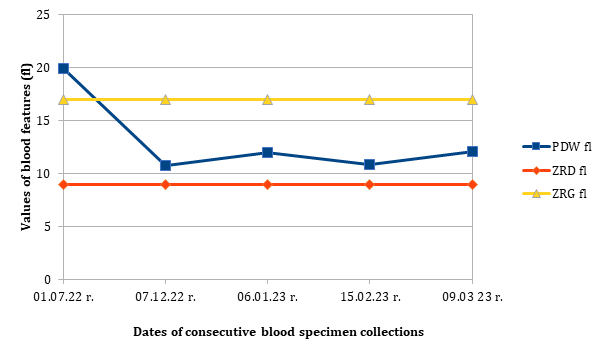
Figure 9: Over normative changes in the values of PDW n=1.
Note*:
a) Line with a big square-the process of changes in blood features.
b) Line with a triangle-upper referential range.
c) Line with a small square-lower referential range.

Figure 10: Over normative changes in the values of MPV n=1.
Note*:
a) Line with a big square-the process of changes in blood features.
b) Line with a triangle-upper referential range.
c) Line with a small square-lower referential range.

Figure 11: Over normative changes of Bazophiles n=1.
Note*:
a) Line with a big square-the process of changes in blood features.
b) Line with a triangle-upper referential range.
c) Line with a small square-lower referential range.
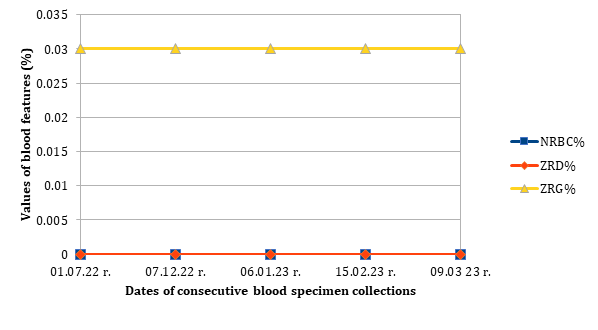
Figure 12: Over normative changes in percentage of NRBC n=1.
Note*:
a) Line with a big square-the process of changes in blood features.
b) Line with a triangle-upper referential range.
c) Line with a small square-lower referential range.

Figure 13: Over normative changes in values of NRBC# n=1.
Note*:
a) Line with a big square-the process of changes in blood features.
b) Line with a triangle-upper referential range.
c) Line with a small square-lower referential range.

Figure 14: Over normative changes in values of Monocytes n=1.
Note*:
a) Line with a big square-the process of changes in blood features.
b) Line with a triangle-upper referential range.
c) Line with a small square-lower referential range.
Discussion
The prisoner’s environment consists of many stressors. The subject’s experience shows that the most important distressors were cellmates and relations with prison guard. A significant factor of distress was also the awareness of the threat of using physical force as a criterion shaping the social hierarchy in the cell and in the ward. This is confirmed by the results of Jaworska’s research [14], which shows that the second most common motivator for undertaking strength training and boxing is gaining dominance and shaping the potential for aggression. Psychological pressure from the fellow inmates of other cells played a less crucial role because the subject represented a higher-than-average level of cognitive development (WECHSLER test), awareness (PCI index) and education. There was also less importance in the necessity of using obligatory prison vocabulary among inmates [15,16], limiting personal hygiene by prison guard as well as physical activity, usage of the common room and ward canteen. Another mitigating stress factor of the subject was the conscious acceptance of becoming imprisoned by committing the act against the law and formulating the criminal procedure leading to the judge’s decision on early parole. The respondent and other inmates had the opportunity to meet a psychologist or a tutor on certain days and hours, who could take appropriate actions to correct the behavior of the other inmates. The respondent did not make use of these tools. Prison ministry, which was used by about 10% of prisoners, included 2-3 masses a month, confession, and conversations with a priest. The importance of these three institutions in buffering stress among prisoners should be emphasized.
Another distressing factor was the prison environment and the prison procedure, which in the first days and months of registering provided a remand in a closed ward (P1) with significant restrictions compared to a half-open ward (P2). In the generally accessible corridor of both wards, there was a notice board with administration announcements of the penitentiary, the library, and the chaplain. In the P2 ward, there are additional board with job offers, education, assistance associations for those finishing their imprisonment, and leaflets with information on the consequences of drug use and practicing selected physical activities. The subject was qualified by the psychologist only to participate in the training on stress struggle. In the first of the five months (out of 8 adjudicated) of the durance in the custody in P1 ward, the subject served his penalty of restricted liberty in a four-man cell, the second month in a three-man cell, the third in a six-man cell with toilets, washbasins and mirrors inside the cell, and another two months in a threeman cell in P2 ward, with toilets, washbasins and mirrors generally available in a separate large room with an entrance from a generally accessible corridor. The size of the cell depends on the number of inmates and is defined by the standard, which provides approximately 2.5 square metre per inmate. There was hot and cold water available in each ward. The administration of the Custody and Correctional Facility agreed to one TV set with a screen up to 25 inches in a cell, if the behavior of the inmates was consistent with the accepted norms of the institution. There were enough stools and tables in each cell for every inmate. In the P2 ward meals were eaten in the cell, due to the Covid-19 pandemic restrictions. In P1 ward, meals were delivered to the cell, due to the ban on leaving the one, whereby in the P2 ward the inmates received their meals in the ward kitchen. The daily schedule in each of the wards was similar and was as follows: 6.00 wake-up call, 6.10 first prison assembly, 7.00 breakfast, 10.00 -11.00 walk around the prison yard, 12.30 lunch, 1.00 p.m. phone calls - once a day for 6 minutes, 6.00 p.m. second prison assembly, 7.00 p.m. supper, 8.15 p.m. third prison assembly, 10.00 p.m. quiet hours. In P2 ward from 8:00 p.m. to 6:00 a.m., there was a no-contact order with fellow inmates form other cells, and in P1 ward there was total no-contact order. The inmates were supervised by 1-2 prison guards. There was limited number and time of telephone calls as a restriction in the case of non-statutory behavior applied to prisoners. While in the P2 ward time and amount of phone calls is unlimited but fitting within the time frame between 8.00 a.m. and 8.00 p.m., in the P1 ward, however, it is six minutes once a day and it depends on the degree of obeying the rules of the facility. The inmate’s visitations with relatives usually took place twice a month for 60-90 minutes. The length and quantity also depends on the degree of obeying the regulations. In both wards, bathing in the bathhouse was set at certain hours twice a week and could not be used as a disciplinary measure. However, the guards in the P2 ward applied restrictions on the usage of basins in the publicly accessible bathhouse due to the non-statutory behavior of the inmates. This forced the personal hygiene after physical activity in the generally accessible toilet in P2 ward and toilets usage inside the cell in P1 ward. The inmates disciplined one another in maintaining personal hygiene and cleanliness of working clothing as well as casual clothes. A disciplinary measure was also the possibility of employment outside the place of serving penalty of restricted liberty. This was the way to reward prisoners for peaceful behavior in the ward, and to check the effectiveness of the imposed penalty and the discipline of returning to the institution. The effectiveness of anti-alcohol programmes was randomly diagnosed among the employees. About 30% of inmates from the P1 ward were qualified for work therapy on the premises of the prison (after a medical examination) and about 80% from the P2 ward to work outside the prison. The informal reward was meals served at the workplace by the employer. This was of great importance in the case of limited financial resources committed for feeding inmates. The subject used this form of giving food to a limited extent in the last month of his durance.
Nutrition rate for one inmate was 4,74 zł. There were cases, where the menu presented on the website did not correspond with the reality. Tea or sugar was not dispensed. Weekly menu in August consisted of: Monday: breakfast-bread, margarine, jam, tea; dinner-boiled potatoes, two boiled eggs, sauce, beetroot salad; supper-bread, margarine, milk soup, lard, pickled cucumber, onion, tea. Tuesday: breakfast-bread, margarine, tinned sausage, tea; dinner-boiled potatoes, meatball, sauce, sour cabbage, fruit soup with noodles; supper-bread, margarine, tinned fish and rice tomato paste, tea. Wednesday: breakfast-bread, margarine, luncheon meat, tea; dinner-pasta with vegetable sauce, cabbage soup; supper- bread, margarine, meat loaf, tea. Thursday: breakfast-bread, margarine, tinned fish and rice tomato paste, tea; dinner-boiled potatoes, a slice of fried mortadela, sour cabbage, pea soup; supper- bread, margarine, two boiled eggs, tea. Friday: breakfast-bread, margarine, luncheon meat, tea; dinner-boiled potatoes, fish burger, carrot raw salad, beetroot soup with noodles; supper-bread, margarine, tinned meat, tea. Saturday: breakfast-bread, margarine, luncheon meat, tea; dinner-boiled potatoes, liver stew, beetroot salad; supper-rice with yoghurt, tea. Sunday: breakfast-bread, luncheon meat, tea; dinner-barley soup (rarely second course); supper-bread, margarine, plum stew. The inmates were able to buy grocery products twice a week in the ward canteen because of the low caloric value in the meals. The inmates mostly bought pasta, oats, milk, instant soups, coffee, and sweets. They spend about 300-400 zł per month depending on the inmates’ wealthiness. The inmates spent 200 zł on cigarettes per month due to 80% of nicotinism, which was the significant component of their budget. The nicotinism of an inmate was one of the criteria to be accommodated to a particular cell in P1 ward. There was a special room, where inmates could smoke in P2 ward, at the same time smoking in the cell was forbidden. There was no problem of alcohol consumption in each ward. The subject tried to limit meals only to those served by the prison kitchen.
Education of physical culture in the P1 ward was mainly in the shape walk or fartlek on a hard path of a prison yard of about 30m, and in P2 of 100 m. It should be noted that the P2 ward area is large, limited by 4m high fence and wire entanglements, however, P1 ward area is a space limited by a 4 m high wall and a barbed wire ceiling. The regulations allowed for an hour’s walk once a day in the P1 ward, and twice a day in the P2 ward. It can be assumed that (depending on weather conditions) about 20% of inmates from both wards use this form of physical activity. Research by Jaworska [14] showed that some inmates do not engage in physical activity. The presented research results did not show any particular reason for nonfeasance. The author looked for the reasons in the so-called lack of vigor, constitutional factors, lack of infrastructure and encouragement from prison staff. Other authors believe that sports activities have significant therapeutic values, because they relieve tension, strengthen internal control mechanisms, contribute to the development of anticipation of the consequences of one’s actions and shape socially desirable attitudes of antisocial people [1-3,17]. The gym, officially known as the recreation room, was a form of reward for peaceful behavior of the inmates in accordance with the regulations. In the P1 ward it was possible three times a week, in the P2 every day. At the same time, the percentage of users of the gym was significantly lower because of small space, poor equipment, and the dominance of inmates with longer sentences. The subject did not try to get the access to this form of physical training due to the adopted rules of residence. The area of the gym in P1 ward was approx. 10 square metres, in P2 20 square metres. The equipment included a ladder and a gymnastic mattress, a rack with a complete barbell for about 200kg, an ergometer, dumbbells of various weight, a wall stand for exercising the lower part of the abdominal muscles, mirror, preacher bench, and soft floor. The applied methodology of strength training derived from the experience of co-practicers and from available publications [18]. Usually, one training was focused on selected muscle groups and included 5-8 series of 7-8 exercises, 8-10 movements in each exercise. The break between successive exercises was usually determined by the time of smoothing the breath. The undertaken physical effort forced the practicers to personal hygiene activities in the generally accessible toilet in P2 ward and the toilet inside the cell in P1 ward. The subject’s physical activity consisted of all walks, regardless of the weather, and dynamic exercises of the oblique muscles and the rectus abdominis muscle performed in the cell or in the day room. The off-road machines that improve the strength of various muscle groups found outside the prison were purchased, but not installed, at the place of the subject’s durance. Similarly, basketball and handball courts were not made available. The cold and lighted common room was occasionally used by a few inmates to play ping-pong and as a makeshift exercise room by those unable to use the gym. The function of the reading room and individual activities requiring silence and concentration, impossible to achieve in a cell, were omitted. Jaworska’s research [14] shows that the most important motivation to undertake physical activity is to maintain contentment and satisfaction with life, and according to inmates, physical exercise is a good form of entertainment and time filling. An important reason, although according to the author not realized by the inmates, in anti-stress therapy are contacts with a wider group of inmates, leaving the cell, releasing tension and accumulated energy, and shaping typical personality traits of an athlete. The author noticed that the motive for taking up the physical activity is mainly to improve physical fitness, but to a lesser extent to improve health. This is contrary to the research conducted in the environment of free people. The author also draws attention to less positive motivators for exercising that she describes as greater readiness to engage in criminal behavior.
Research on the impact on stress in the broad sense on the picture of blood characteristics indicated that stress increased platelet aggregation, which increased the risk of blood clot that could block a blood vessel and prevent blood flow, which in turn could lead to a stroke. This phenomenon did not occur in the subject. In each of the measurements, the value of platelets remained at the same, similar level (Figure 5). A similar situation occurred with Cortisol. Initially (first measurement) the amount of this hormone was at a very low level, to increase to utmost value during the period of imprisonment (second measurement). In subsequent periods, its value gradually decreased, but always remained within the upper and lower referential range. Cortisol is a stress hormone, which increased secretion occurs the in distressing conditions. It causes glucose increase in blood because the body needs more energy in these circumstances, enhancing the action of other stress hormones (adrenaline and norepinephrine). Cortisol affects the functioning of the circulatory system by increasing the heart rate. It also affects the metabolism of proteins intensifying their breakdown, fat metabolism increasing the breakdown of triglycerides, carbohydrate metabolism intensifying gluconeogenesis and glycolysis, water and electrolyte metabolism, salt retention and increasing potassium excretion (Figure 1). Cortisol also reduces calcium absorption, which was not noticeable at the subject (Figure 7). Proper concentration of cortisol in the body is important for the proper functioning of the immune system because this hormone has anti-inflammatory and immunosuppressive effects. Chronically high level of cortisol has a negative impact on health. It indirectly causes obesity and conduces to the development of metabolic syndrome. If the growth of cortisol is caused by stress and persists for a long time, it leads to problems with concentration, memory, and insomnia. Insomnia leads to serotonin decrease, which increases the risk of depression symptoms. In the case of a low level of serotonin and the additional factors (e.g., severe stress), there is a risk of adrenal crisis - a life-threatening condition that requires immediate medical intervention. The critical symptoms are like disturbance of consciousness, low arterial blood pressure and accelerated heart rate, as well as blackout [19].
The PDW value found in the first measurement above the upper normative range (Figure 9) is an indicator of a larger range of platelet values, which may be due to increased platelet activation, degradation, and usage. An elevated result may suggest a vitamin deficiency, in particular vitamin B12, and may be the result of dietary errors made by the examined person. PDW norms are not a standalone disease marker, and PDW deviations results should always be interpreted in conjunction with Mean Platelet Volume (MPV) and Total Platelet Count (PLT). If the rest of the blood results are normal, the PDW itself does not say anything about the state of health. MPV found in the first measurement below the lower normative range (Figure 10) showed a reduced number of mean platelets [20,21]. Hence, the durance did not negatively affect the blood features.
The amount of Monocytes in the second and third measurement above the upper referential range (Figure 14) and the percentage of Monocytes above the upper referential range, with the peak of deviation in the third measurement (Figure 15) may be a symptom of bacterial and viral infections, protozoa (malaria, amoebiasis), systemic connective tissue diseases, cirrhosis of the liver, chronic cicatrizing enteritis and acute and chronic myelomonocytic leukemia, acute monoblastic leukemia, or multiple myeloma. Later diagnostics did not reveal any of these diseases at the subject. It should be assumed it was postponed effect of stress related to the durance in the broad sense [22].
The value of lactate in the second, third, fourth and fifth measurements above the upper referential range, with a peak in the second measurement (Figure 16), may be a postponed effect of stress and metabolic acidosis associated with imprisonment [23,24].
Summary
The limited side effects of the five-month period of stress influence while the durance in the blood picture were caused by the reliable and permanent practice of the healthy lifestyle assumptions. This enabled the effective selection of stressors, and thus reduced the body’s response to external factors. In the prison surroundings it was impossible to create conditions for proper self-development and psychosocial functioning, the possibility of obtaining social support, the right atmosphere in the cell and at the workplace, respecting the needs, communication and connection with co-inmates, a balanced and proper diet. The subject fulfilled the idea of rational rest, regeneration, and entertainment. He effectively avoided passive and active smoking, practised moderate physical activity, cared for the right balance between study, work and entertainment (mainly TV), sleep and rest. The knowledge of the rules of cooperation among co-inmates, justice, respect for the dignity of other people, the ability to comply with established social rules enabled a conflict-free durance. The examined person achieved the reduction of chronic stress through visualizations and affirmations (improving self-efficacy by imagining a positive future), estranging oneself from the throng (practicing the ability to notice benefits in difficult situations and obstacles), breathing relaxation and movement therapy.
Acknowledgement
None.
Conflict of Interest
None.
References
- Tchaikovskaya B, Golema M, Popieluch W (1967) The significance of physical education classes in the therapeutic and educational process of prisoners with deviations from the mental norm and their attitude to these classes. Penitentiary Review (3).
- Fiutko R (1966) Physical state of juvenile offenders in the penitentiary in Ił Penitentiary Review (2).
- Sas Nowosielski K (2002) O possibilities of using physical culture in the rehabilitation of minors, Warsaw. Publishing House of the Higher Pedagogical School of the Society of Universal Knowledge.
- Kalina RM (1991) Counteracting aggression, using sport to reduce aggressiveness, Warsaw. Polish Society of Mental Hygiene.
- Morawski J (1991) The research on the effectiveness of youth rehabilitation in strict regime. Penitentiary Review (4).
- Poklek R (2008) Physical activity with the severity of the syndrome of aggression of persons deprived of liberty. Kalisz: Central Prison Service Centre.
- Poklek R (2009) Specific and non-specific functions of physical education resocializing [in:] Terapia w resocjalizacja, cz. II: Practical approach, (eds.) Rejzner A, Szczepaniak P, Wydawnictwo Akademickie Żak, Warsaw.
- Jaworska A (2016) Physical culture in the re-education of persons serving a prison sentence - motivation of convicts to participate in programmes in the field of physical culture and sport. Culture and Education 1(111): 140-158.
- Mrozkowiak M, Posłuszny M (2014) Reflections on body posture in the context of genetics and epigenetics=Some reflections on body posture in the context of genetics and epigenetics. Journal of Health Sciences 4(13): 187-200.
- Mrozkowiak M, Mrozkowiak Magdalena (2011) What is it healthy lifestyle=What is meant by the healthy lifestyle? [In:] Ontogeny and health promotion: in the aspects of medicine, anthropology and physical education. (Ed.) of Sciences. Józef Tatarczuk, Ryszard Asienkiewicz, Ewa Skorupka. Zielona Góra: Oficyna Wydawnicza Uniwersytetu Zielona Góra: 117-130.
- Wolański N (2006) Human Ecology. PWN Scientific Publishing House. Warsaw 1: 11-208.
- Heszen Celińska I, H Sęk H (2022) Health Psychology, PWN Scientific Publishing House, Warsaw.
- Vicennati V (2009) Stress-related development of obesity and cortisol in women. Obesity 17(9): 1678-1683.
- Jaworska A (2016) Physical culture in the re-education of persons serving prison sentences - motivation of convicts to participate in programmes in the field of physical culture and sport. Physical Culture1(111): 140-158.
- Kania St (1995) Dictionary of argotisms. Warszawa.
- Klich E (1914) An attempt to explain a few words of the prison dialect. Language Polish (5).
- Skoczylas W (1992), Sport in prophylaxia resocialization. Physical Culture 5-6.
- Wade P Condemned to training, JK Wydawnictwo Sp zoo, Krakowska 3, Łódź 1(3).
- Litzke SM, Schuh H (2007) Stress, mobbing and burnout, GWP, Gdań
- Golwala Z, Shah H, Gupta N, Puliyel J, V Sreenivas (2016) Mean Platelet Volume (MPV), Platelet Distribution Width (PDW), Platelet Count and Plateletcrit (PCT) as predictors of in-hospital paediatric mortality: a Case-Control Study. Afri Health Sci 16(2): 356-362.
- Vagdatli E, E Gounari, E Lazaridou, E Katsibourlia, F Tsikopoulou, et al. (2010) Platelet distribution width: a simple, practical and specific marker of activation of coagulation. Hipokratia. 14(1): 28-32.
- Avitsur R, Stark JL, Dhabhar FS, Sheridan JF (2002) Social stress alters splenocyte phenotype and function. J Neuroimmunol 132(1-2), 66-71.
- Kukliński B (2017) Mitochondrial medicine: symptoms, diagnostics and methods of therapy.
- Carrot A, Filar Mierzwa K, Teległow A (2009) Rheological properties of blood a physical effort in the aging process. RehMed 13(1): 29-32.

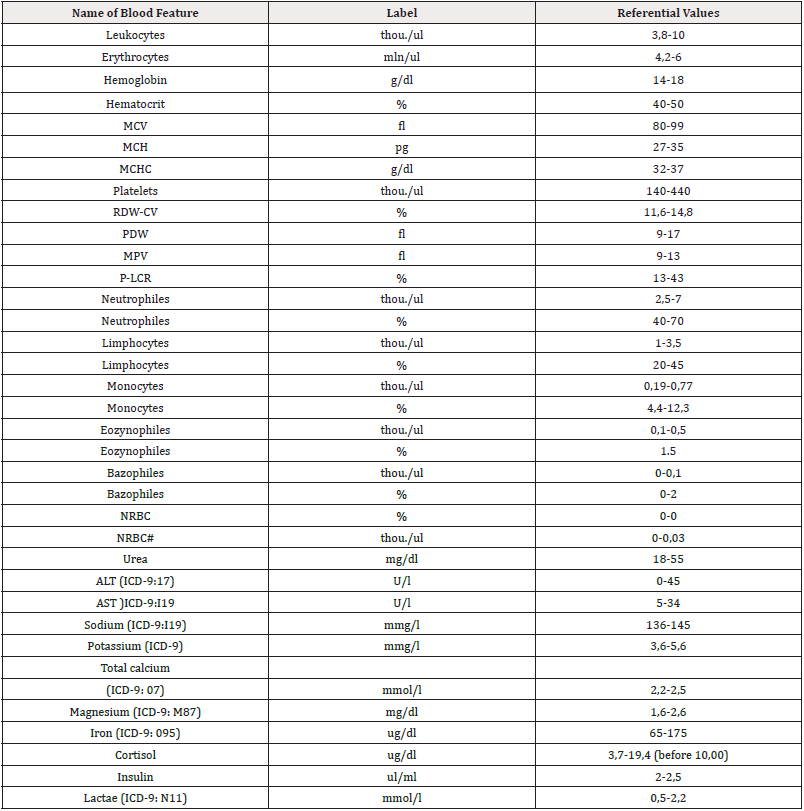
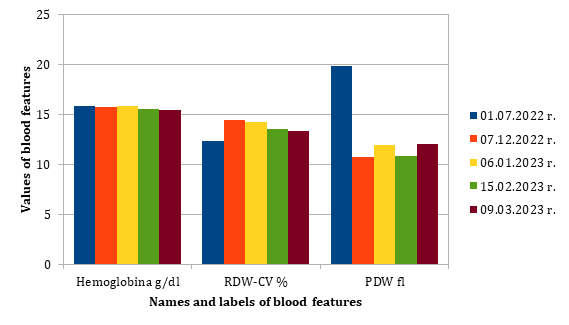
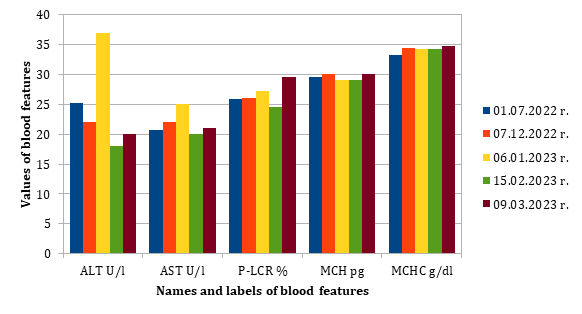
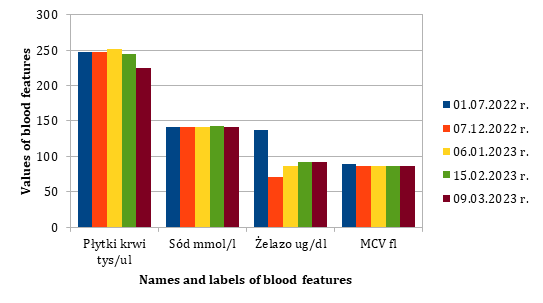

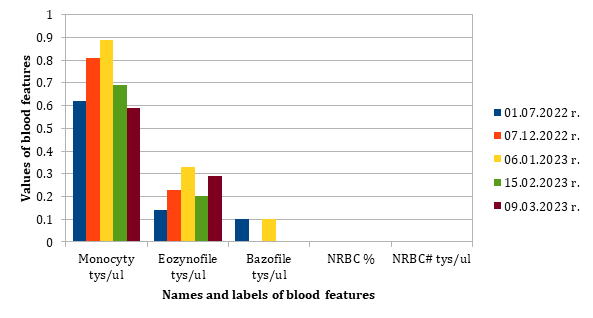
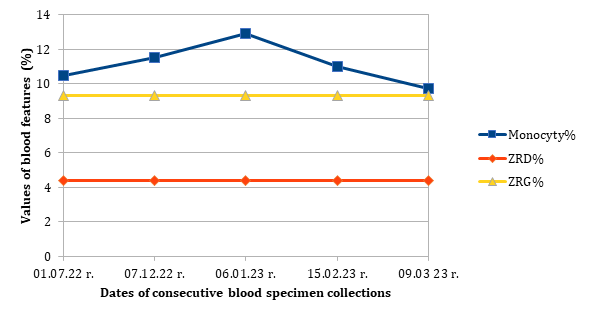
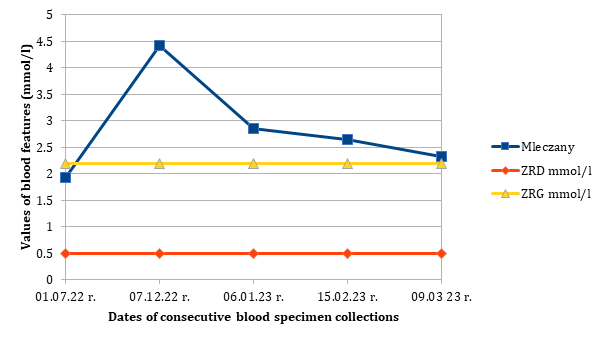


 We use cookies to ensure you get the best experience on our website.
We use cookies to ensure you get the best experience on our website.